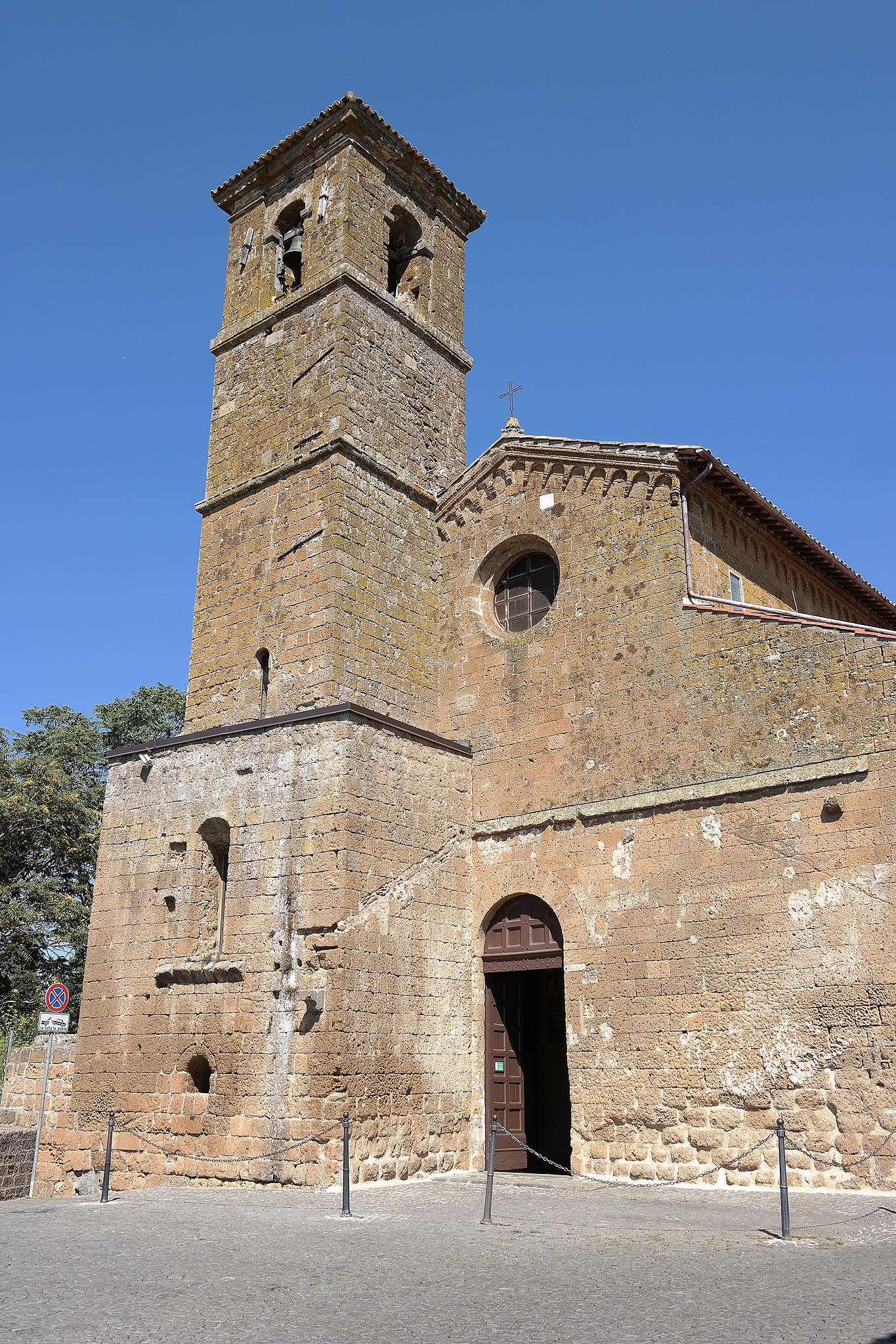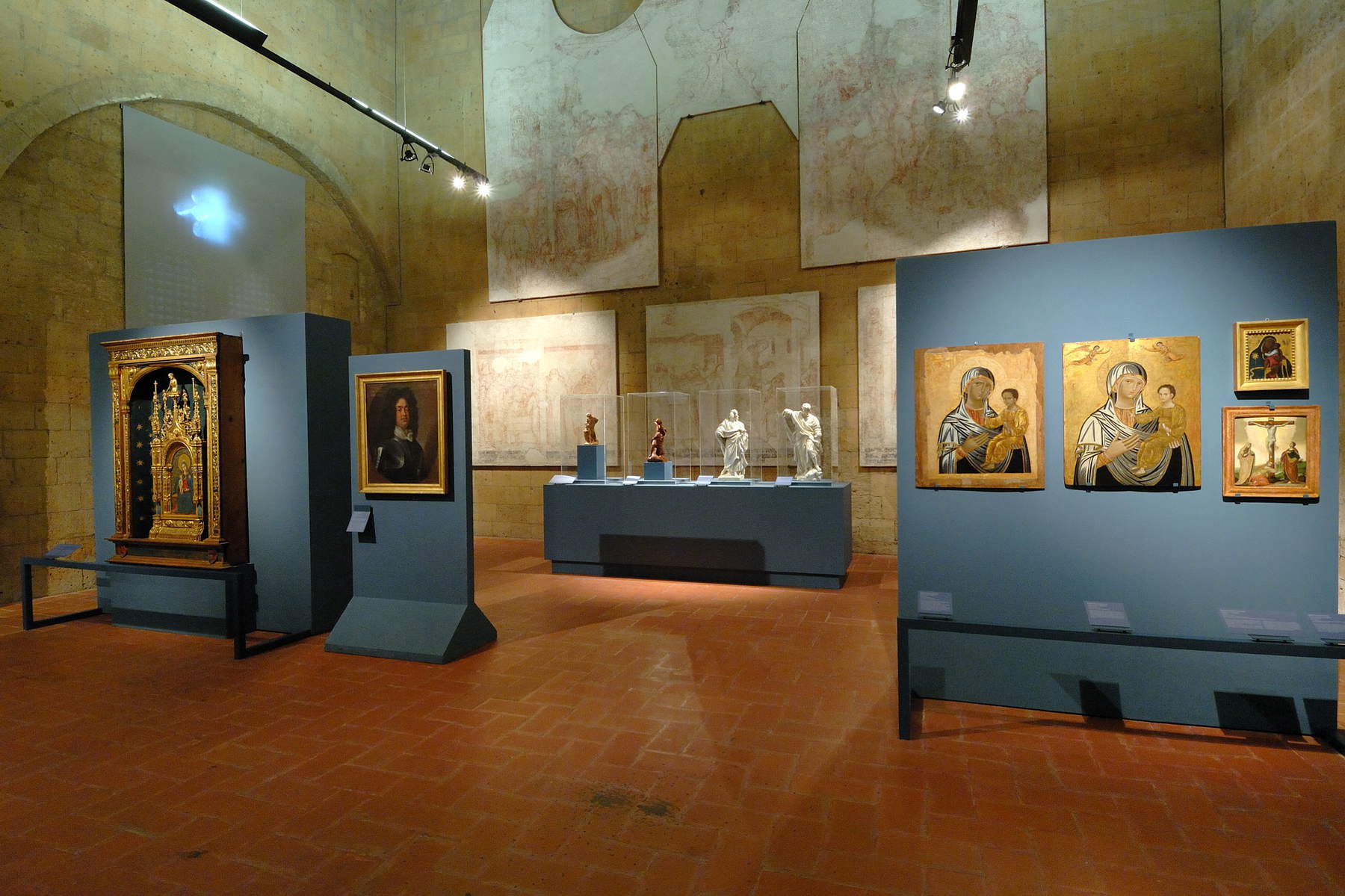Orvieto is a city situated atop a tuff cliff in the heart ofUmbria. Famous for its thousand-year history and artistic and cultural heritage, Orvieto is enveloped in a special medieval and Renaissance atmosphere. The cathedral, a Roman-Gothic masterpiece, holds treasures such as the Brizio Chapel, an artistic unicum. Frescoed by Luca Signorelli, the Last Judgment is one of the greatest works of Italian Renaissance art. Next to the Duomo, however, is the Museo dell’Opera del Duomo, which houses works of art including paintings by Simone Martini and Luca Signorelli. Orvieto is also famous for its even more distant past: its necropolis such as those at Crocifisso, its Roman artifacts housed inside the Claudio Faina Archaeological Museum tell its thousand-year history. Itsundergrounds, on the other hand, a labyrinth of tunnels and cisterns carved into the tuff, tell the tale of the city’s water supply through the centuries. St. Patrick’s Well, a monumental piece of 16th-century engineering, on the other hand, represents the ingenuity Orvieto’s citizens used in securing water supplies even during periods of siege. If you have never visited Orvieto, a city rich in historical and artistic treasures, we recommend 10 must-see places to fully understand its history.
Orvieto Cathedral, a masterpiece of Italian Romanesque-Gothic architecture, is the symbol of the city and is dedicated to the Virgin Mary assumed into heaven. Its facade is Gothic in style, and construction began around 1310 and was completed in 1532. Internally, it is divided into three naves by columns and pillars; originally, ten small side apses housed Baroque altars, but these were removed in the late 19th century to restore the original structure of the cathedral. The Chapel of San Brizio inside is famous for its fresco cycle on the Stories of the Last Days, begun by Beato Angelico in 1447 and completed by Luca Signorelli between 1499 and 1504. Built in the 14th century, the Chapel of the Corporal, on the other hand, takes its name from the relic of the Sacred Linen from the Miracle of Bolsena, kept inside. In 1357, the cathedral crypt underwent alterations and its walls were decorated with frescoes. Prominent among them are representations of two saints and a painting of the Annunciation dating from the second half of the 14th century. Opposite the entrance to the crypt, however, is Cola Petruccioli’s Crucifixion.

In 1527, during the sack of Rome, Pope Clement VII found refuge in Orvieto and commissioned Antonio da Sangallo the Younger to build a well to ensure a water supply in case the city was besieged. Initially known as Pozzo della Rocca because of its destination to the fortified fortress, the well later acquired the name St. Patrick’s Well in the 19th century. The name change was based on the legend of St. Patrick, according to which he had access to a deep well that showed Hell Purgatory and Heaven. Sangallo’s design, influenced by the spiral staircase at the Villa del Belvedere in the Vatican and the royal staircase at the Palazzo Farnese in Caprarola, was distinguished by a helical system of staircases. Today it is possible to descend to the depths of the shaft by walking down all 248 of its steps.

The Well of the Quarry is located in an archaeological complex of nine rooms, with finds dating fromEtruscan times to the Renaissance. Inside are: a medieval kiln that preserves the remains of the firing oven, fragments of majolica discarded for manufacturing defects and tools for decorating pottery; medieval wells called butti used to dispose of bones and waste; a tomb; an Etruscan cistern, originally used to collect rainwater, waterproofed with cocciopesto plaster; a medieval cellar that was used to store wine; the remains of a medieval tower built by the sons of Simone dei Filippeschi; and a possible rock necropolis. The last room on the route was used in the past as a tuff quarry. The archaeological heritage has been unearthed after centuries of neglect and since 2023, it has been included in theUNESCO World Network of Water Museums.

Orvieto Underground is now one of the properties protected by FAI (Fondo Ambiente Italiano), a program that aims to preserve the beauty of Italy’s historical, artistic and landscape heritage. The cavities of the underground city of Orvieto have yielded numerous historical artifacts, including Etruscan cisterns dating back to the fifth century B.C., evidence of the Etruscan colonization that gave rise to the city of Velzna, Orvieto’s ancient name. The finds also include medieval and Renaissance cisterns, Etruscan tunnels used for water supply, and medieval butto wells used as dumps, in which ancient vases have been found. The main sites of underground Orvieto open to the public include; Orvieto Underground, the Well of the Quarry, and Hadrian’s Labyrinth.

The Palazzo del Capitano del Popolo or People’s Captain’s Palace dates from the early 1380s and is thought to have been built at the initiative of the Neri della Greca family on a pre-existing papal palace from 1157. The bell tower dates from 1315 and later, the Captain of the People placed there the bell engraved with the symbols of the arts, now located on the Moor’s Tower. It was the seat of the first city assembly of people’s representatives and the seat of city authorities during the government of the free municipality. Since 1991 the building has housed a conference center and multipurpose space for meetings and events. The structure, as well as the square in which it is located, has always had a strong connection with the population and its social and economic dynamics. Several works have made archaeological discoveries in the basements of the palace including: a 5th-century temple, an aqueduct, and a medieval cistern.

The church of San Giovenale, Orvieto’s oldest, was built in 1004 over the remains of an early Christian church, which in turn had been built over a pre-existing Etruscan temple probably dedicated to Tinia, Jupiter to the Etruscans. The church is dedicated to St. Juvenal, the first bishop of Narni, whose stone effigy is placed above the side portal. In its Romanesque simplicity, the building is situated at the end of the cliff, in the old medieval quarter. The walls of the church are partly covered with frescoes depicting the typical subjects of medieval Orvieto painting, although many of them were covered with lime in 1640. After a recent restoration, the church walls have brought to light ancient frescoes and paintings dating from the second half of the 13th and 14th centuries, giving visitors an insight into the history of painting in Orvieto. Outside the church, an area of public green space is the focus of a municipal project to redevelop the green space by recreating the medieval garden of San Giovenale, a planting of horticultural and tree crops inspired by monastic tradition.

The Claudio Faina Archaeological Museum, houses one of the most important archaeological collections in Italy. The collection, formed during the nineteenth century, includes Etruscan artifacts such as ceramics, bronzes, jewelry, Greek artifacts such as black-figure and red-figure vases, and Roman artifacts. Inside the facility, there is also the city’s Civic Archaeological Museum, with sculptures from the Etruscan and Roman periods. Of particular note are the decorations from the Belvedere Temple, the warrior’s head cippus, the Venus of Cannicella , and two sarcophagi. In 1957, the Claudio Faina Museum Foundation was established to protect and promote the collection assembled by Counts Mauro and Eugenio.

Dating back to the 12th century, the church of Sant’Andrea is one of the oldest in Orvieto, although the facade has modern elements, the result of additions during the restoration conducted in 1926 by engineer Gustavo Giovannoni. During this intervention, modern elements were added to the facade, such as the high-reliefs in the lunette of the portal, the stained glass window of the rose window, and the majolica and terracotta tiles of the new portico. Attached to the church is also a dodecagonal bell tower. Inside, the church has a Latin cross plan and a wooden truss roof (except at the junction between the main body and the transept, where cross vaults supported by beam pillars are observed). , similar to that of the Abbey of St. Severus and Martyrius. The cosmatesque pulpit with marble inlays, remains of frescoes ranging from the 14th to the 17th centuries, as well as the crypt, which reveals traces of the earlier phases of use of this place, are worth seeing.

The Museo dell’Opera del Duomo consists of four small spaces, including the Chapel of San Brizio, the Church of Sant’Agostino and the Albèri Library. Nonetheless, it is the Palazzi Papali that deserve a special visit, thanks to their collection of few but exceptional works displayed in the so-called Stanza delle Meraviglie. The itinerary within the rooms spans the 13th century to the first half of the 17th century and includes works such as Coppo di Marcovaldo ’s Madonna del Bordore from 1261, two paintings by Simone Martini Madonna and Child with Angels from 1322-1324, and the San Domenico Polyptych from 1320-1321, and a St. Mary Magdalene by Luca Signorelli from 1504.

The locality takes its name from a sixteenth-century crucifix carved into the tuff, preserved in a small chapel under the area of San Giovenale. The earliest reports of finds in the area date from the late 18th century, but more detailed information refers to the years 1830-31. A distinctive feature of the necropolis is the presence of a large number of inscriptions testifying to prenames and gentiles of the ancient inhabitants of Orvieto. The inscriptions probably constitute the most consistent Etruscan epigraphic evidence from the Archaic period, referable to a single town community.

 |
| Orvieto, what to see: 10 places to discover it |
Warning: the translation into English of the original Italian article was created using automatic tools. We undertake to review all articles, but we do not guarantee the total absence of inaccuracies in the translation due to the program. You can find the original by clicking on the ITA button. If you find any mistake,please contact us.